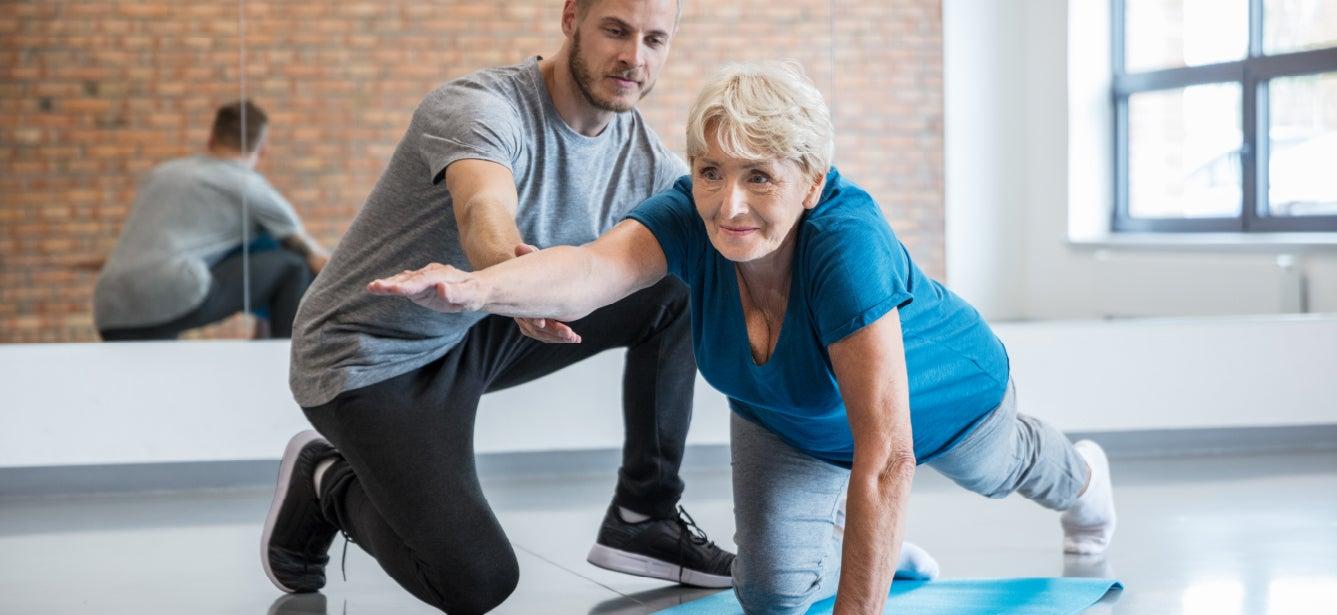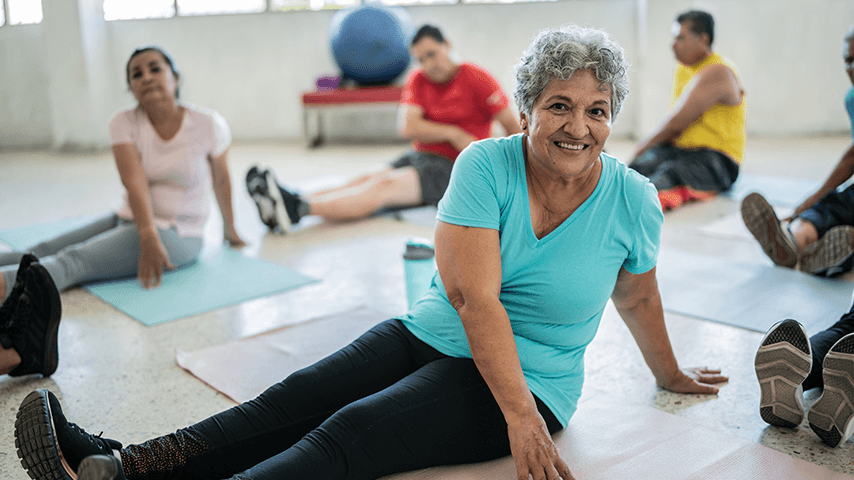
Related Topics
Physical therapists (PTs) are experts in how the body moves. They identify and treat movement problems in people of all ages and abilities. They do this by providing hands-on care, education, and by prescribing specific exercises or activities. Most PTs have completed a three-year training program and have a doctorate in physical therapy (DPT). All physical therapists must be licensed by their state in order to practice.
Using the latest research, physical therapist design a treatment plan for each person's specific needs, challenges, and goals. PTs help patients to better manage pain, and support recovery from injury. They also have the skills to educate and empower patients to prevent injury and manage or prevent chronic disease. These health professionals help you stay independent and do the things you want to do.
Nearly 80% of PTs practice in settings that typically treat older adults. They are trained to:
- Understand the normal changes in aging
- Recognize how recovering from an injury or managing a chronic disease might be a different process for older adults compared to younger adults
- Integrate their knowledge of aging into an effective program designed for an older adult to successfully achieve their goals
For example, let's say Mrs. Jones has a history of scoliosis along with osteoporosis and heart disease. The PT will take Mrs. Jones' unique history into account to create a program that meets her personal needs. That way she can safely, and successfully, work to improve her strength and endurance.
What does a physical therapist do?
Physical therapists perform comprehensive evaluations to understand a person's mobility abilities. This may include assessing your ability to do activities important to you such as:
- Strength and endurance
- Balance
- Mobility
- Coordination
- Flexibility
- Environment
- Anything else specific to your goals
A PT may also perform a screen of your cognition, vision, medications, mood, and any other health issues or concerns to identify if other health professionals should be involved in your plan of care. PTs will often work with physical therapist assistants (PTA). These individuals are critical members of the team. They are educated and licensed clinicians who provide care under the direction and supervision of a physical therapist.
After an evaluation is complete, the PT will design treatment plans specific to each person’s needs, challenges, and goals.
Treatment plans will include steps that you and the PT will take to meet your goals.
They also include how often you will work with the PT, in what setting (your home or clinic; face-to-face or telehealth), and for how long. After your initial evaluation, the PT will check your progress during each treatment session and update your plan based on your progress.
For example, an older adult with knee pain may start to have difficulty going up and down the stairs in their home. They may go to an outpatient clinic to be evaluated by a physical therapist. The physical therapist will determine the reason for the knee pain. They will then provide treatment in the clinic to improve the mobility of the knee and decrease the pain, and then prescribe a series of exercises for the older adult to do to get stronger. These exercises may also include activities to improve balance and endurance as well as strength.
How does physical therapy help with falls?
Many falls are preventable. Physical therapists are trained to identify the many reasons someone may experience a fall. These are called fall risk factors. A PT can work with you to identify your risk factors and create a plan to help manage them. The PT may use a screening tool to identify your risk factors, like the STEADI (Stopping Elderly Accidents Deaths and Injuries). They may also use a self-check for you to complete, like the NCOA Falls Free Checkup, along with a series of tests to assess your strength and balance. They may also check your feet, including how your shoes fit.
Fall risk assessment also includes a review of medications, vision, and blood pressure. They will provide you with the education you need to understand your risk and what you can do to address your risk factors. When appropriate, a physical therapist may recommend that you see other health care professionals.
Can physical therapy help with balance?
Yes! Physical therapists are experts in identifying why someone is experiencing challenges with their balance.
They can help determine if the balance problem is due to muscle weakness, issues with the inner ear, problems with your sensory system (knowing where your body is in space), poor reaction times, or other contributing factors.
Physical therapists will then create a treatment plan to help you improve your balance. This can include creating a program for you to improve your strength, balance, and reaction time. If the problem is related to your inner ear, there are exercises for that, too.
How do I choose a physical therapist?
Like other doctors, physical therapists often specialize in a specific practice area. Some of the recognized specialties include geriatrics, neurology, orthopedics, and women’s health. When you are looking for a PT, you can ask:
- If they are certified specialists, or if they have advanced training in an area like fall risk management or pain science
- If they see patients that look like you and have similar challenges
- What their goals with their patients are
You want to work with a PT who is vested in you achieving your own goals. It is also a good idea to ask what additional services they offer. For example, do they offer a wellness program after therapy?
It is very common for physical therapists to accept traditional Medicare and Medicare Advantage patients, but you should always check they accept your insurance. Be sure to ask if there are co-pays and if they will submit claims on your behalf.
How can I find a physical therapist?
The easiest way to find a PT is to use this tool created by the American Physical Therapy Association— Find a PT. You can filter search results by location, practice focus, or specialization. If you are looking for a PT who specializes in older adults, you can filter for geriatrics or fall prevention. All physical therapists in Find a PT are members of the American Physical Therapy Association, but not all PTs are members of the APTA. If you are unable to locate a PT using this tool, then look for physical therapists and physical therapy clinics in your community.
What should I do to prepare for a physical therapy visit?
Your first visit with a physical therapist will be very similar to your first visit with any other health care provider. Be ready to be asked a lot of questions and to ask questions of your physical therapist!
Consider writing this information down so you have it handy:
- Any symptoms you have been experiencing like pain, what makes it better or worse
- Any activities you had to stop doing or modify that are associated with this problem
- Key information about your history, even if it seems unrelated
Bring with you:
- Comfortable clothes that you can easily move in
- Hearing aid or glasses if you wear them
- Any assistive devices you use regularly (walker or cane)
- List of medications you are taking including over the counter medications and herbal supplements
- Any medical test results like x-rays or MRI that you had related to this problem
- Your goals and hopes—and never think you are too old or too weak to do what you want to do. Be honest with your PT, make sure you are getting the therapy session you want, and be prepared to be amazed by you what you can achieve!
Watch the two-part webinar series to learn more: Physical Therapists as Partners for Older Adult Health & Wellness




